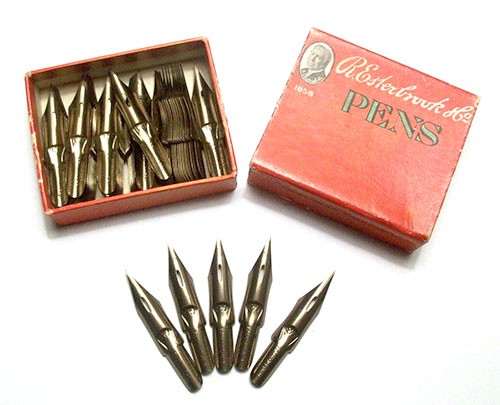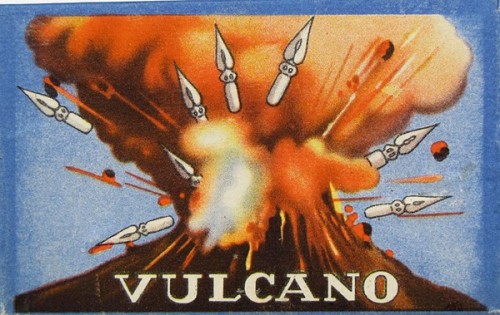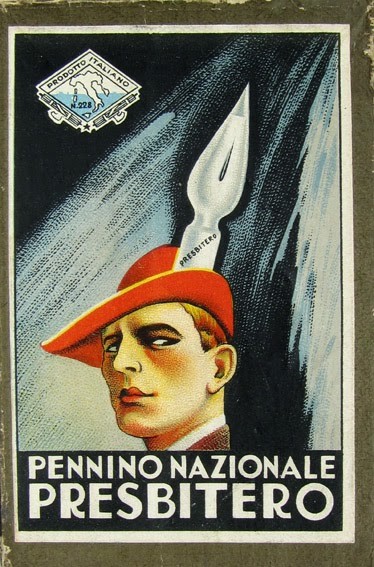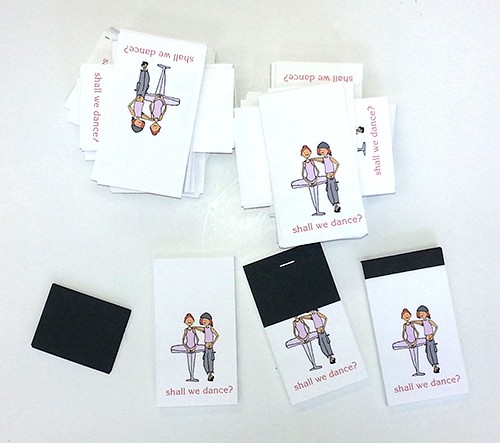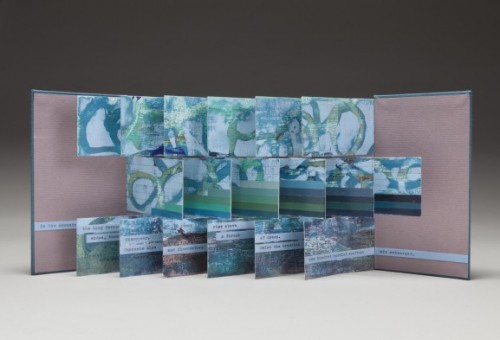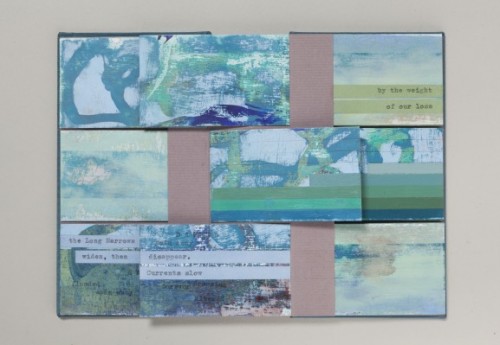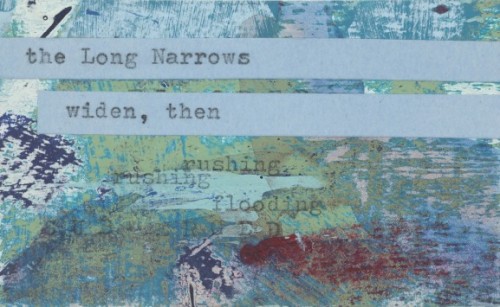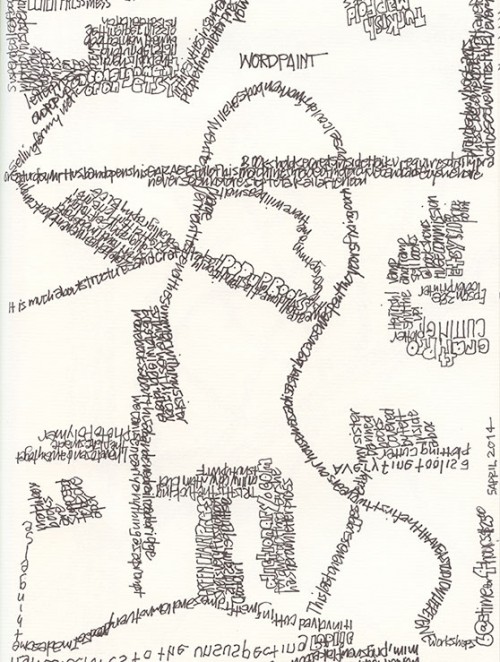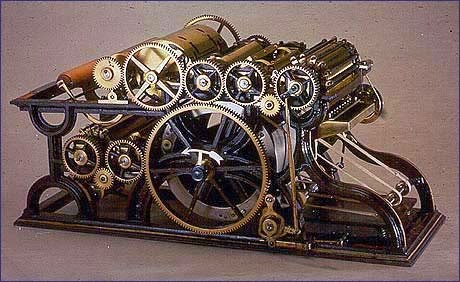I couldn’t find a bigger picture, but I was intrigued by this work by Bexx Caswell in the “Geographies: New England Book Work” show by the members of the Guild of Book Workers’ New England chapter. In the catalog she says
When I first moved to New York, I helped myself to learn the city by equating roads and neighborhoods to those I knew growing up in Philadelphia. I used a similar tactic when I moved to Boston a few years later. I soon found that as I became more familiar with the roadways of Boston, the once familiar landscapes of Philadelphia and New York became faded and distorted in my mind’s eye. Although each of the cities featured in this book have their own distinct geographies, they also share a certain sameness dictated by their location on the East Coast. Street names, landmarks, and visual landscapes all blend into one another.
To create this book, I dissected maps of Philadelphia, New York, and Boston, and then shuffled the pages so that they would be ordered randomly. I intentionally chose maps printed by the same mapmaker to encourage visual similarities. Each roadmap blends into the next, a chaotic jumble of roads, street names, and anonymous landmarks. This in not unlike the map which now exists in my mind’s eye.
See the entire catalog here.

